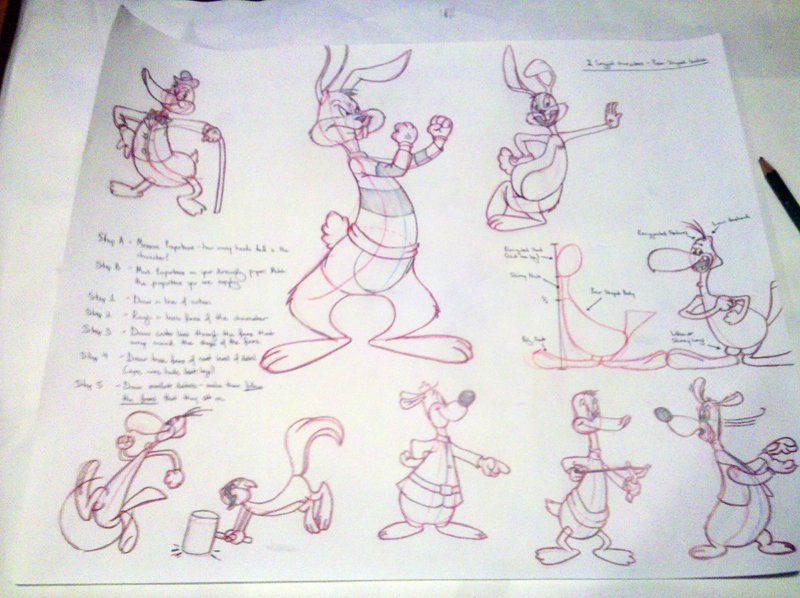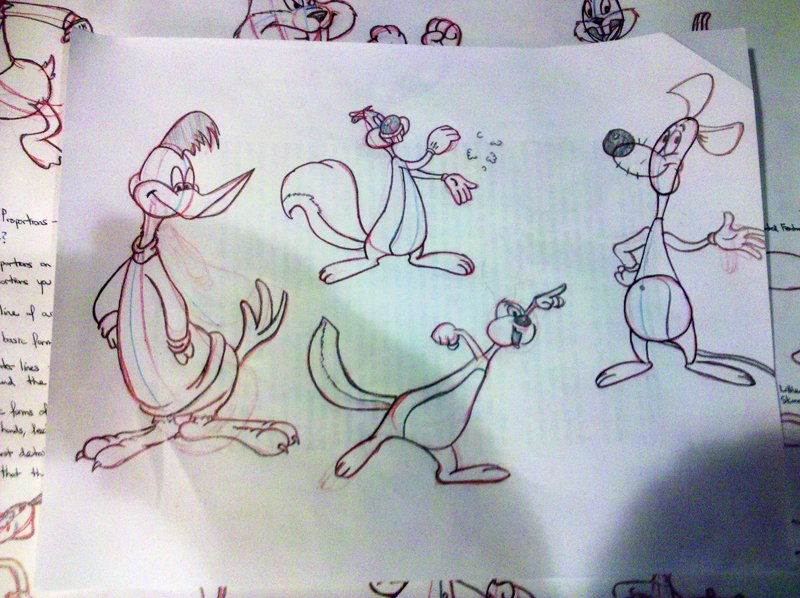I tackled the construction of simple 2 legged-characters. These studies focused around pear-shaped bodies for the sake of simplicity and clarity. Keeping the body type universal was essential because it allowed me to understand construction, proportion and the flowing details around the construction (clothe, eyes, hair).
As John Kricfalusi mentions, pear-shaped bodies are not the only type of cartoon bodies, but using the pear shaped body will help solidify the principles of construction. Bugs Bunny, Daffy Duck, Mickey Mouse, Donald Duck all exhibit the pear-shaped body, albeit in variation of the construction.
John takes Preston Blair’s lessons from his book Cartoon Animation and adds in his 2 steps to Blair’s 5 steps:
Step A – Measure Proportions: how many heads tall is the character (Kricfalusi addendum)
Step B – Mark proportions: to retain image fidelity (Kricfalusi addendum)
Step 1 – Draw line of action
Step 2 – Rough in the basic form (shapes)
Step 3 – Draw the center lines of the forms
Step 4 – Draw basic forms of the next level of detail: eyes, arms, hands, legs, feet
Step 5 – Draw the smallest details and make them follow the forms they sit on (clothes, hair)
I agree with John adding in his steps, I would say that proportion was my biggest challenge in construction. Without John to highlight the importance of proportion, I would probably have worse renderings (some of the characters are a bit off via proportion).
I had the extra time to tackle John Kricfalusi’s animation lessons (which is good) but I think I may be moving too fast. I will revisit heads and try to better familiarize myself with expressions and facial shapes. Once I am confident with expressions, I will continue further with my studies in the fundamentals.



